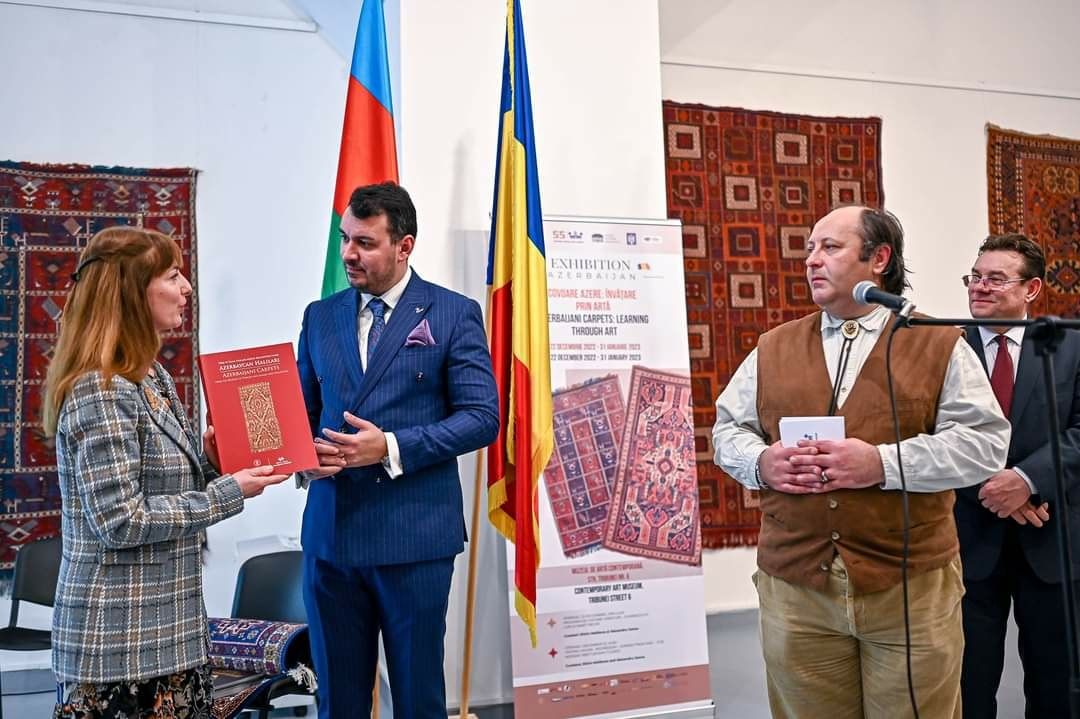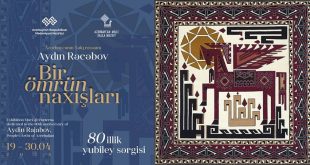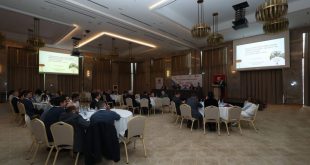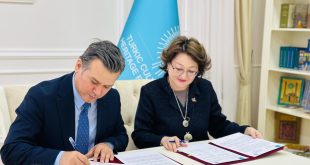
The Romanian Contemporary Art Museum has demonstrated Azerbaijani carpets in Sibiu city, Azernews reports.
The exhibition “Azerbaijani Carpets: Learning Through Art” marks the National Carpet Museum’s 55th anniversary and thirty years of Azerbaijani-Romanian diplomatic ties.
The Carpet Museum presented 15 flat-woven and pile carpets dating back to the late 19th and early 20th centuries. Each carpet brilliantly demonstrates the main features of Azerbaijani carpet schools.
Among the exhibits, world-famous Dragon carpets (Karabakh) associated with the Safavid era, including Gasimushagi, Malibayli, flat-woven Varni carpets as well as Shamakhi carpet (Shirvan) are of particular interest.
The dragon image is widespread in the Turkic nations’ art. Ancient beliefs say that the dragon is the protector of the family. It appears mainly as the defender of the palmette, a symbol of the tree of life on carpets.
The exhibition includes small tactile carpets woven in different techniques by the Azerbaijan National Carpet Museum’s Traditional Technologies Department for individuals with visual disabilities.
Romanian ambassador to Azerbaijan Vasile Soare delivered a speech at the event. He spoke about the history and current development of the relationship between Azerbaijan and Romania.
In his speech, Mr. Soare noted that Romania was one of the first countries to recognize Azerbaijan’s independence.
He stressed the importance of the agreement signed during the visit of President Ilham Aliyev to Romania, and Azerbaijan’s significant contribution to the energy security of Europe.
Mr. Soare named this exhibition a major event in the promotion of Azerbaijan’s cultural heritage and added that it is the first project since his assignment as an ambassador in Azerbaijan.
Carpet Museum director Shirin Malikova emphasized that the Brukenthal National Museum collection houses precious and rare carpets of the XVI-XVII centuries. The Romanian Contemporary Art Museum is a part of the Brukenthal National Museum.
She underlined that the exhibition shows Azerbaijani carpet-weaving art, its role in the nation’s lifestyle, carpet-weaving techniques, as well as the semantics of ancient ornaments.
Acting director of the Brukenthal National Museum Constantin Chituța stressed the project’s significance and noted with great regret that museums in Romania do not have special conditions for people with disabilities.
“Presentation of the carpets woven specially for visually impaired people with explanations in Braille is an outstanding experience for us. In the near future, we will pay special attention to this area of our activity,” he said.
Second Secretary of the Embassy of Azerbaijan in Romania Tabriz Garayev and head of the Art Galleries at Brukenthal National Museum Alexandru Sonoc spoke about the significance of this event and the importance of the development of mutual cultural ties between the two countries.
Later, Alexandru Constantin Chituța awarded Shirin Malikova and Vasile Soare with medal and diploma established on the occasion of the 300th anniversary of Samuel Freiherr von Brukenthal, founder of the Brukenthal National Museum.
Malikova presented to the Brukenthal National Museum Zeyva a carpet woven at the Carpet Museum’s Traditional Technologies Department.
Museum directors, specialists, people of art and culture, and the members of the Romanian Association of the Blind viewed the exhibition with big enthusiasm. The event program also included master classes on carpet weaving.
The project, co-organized by the National Carpet Museum, Brukenthal National Museum, and the Romanian Embassy in Baku with the support of the Azerbaijan Culture Ministry and Sibiu Branch of the Romanian Association of the Blind runs until January 31, 2023.
 Oval Useful news from Azerbaijan and Caucasus
Oval Useful news from Azerbaijan and Caucasus


